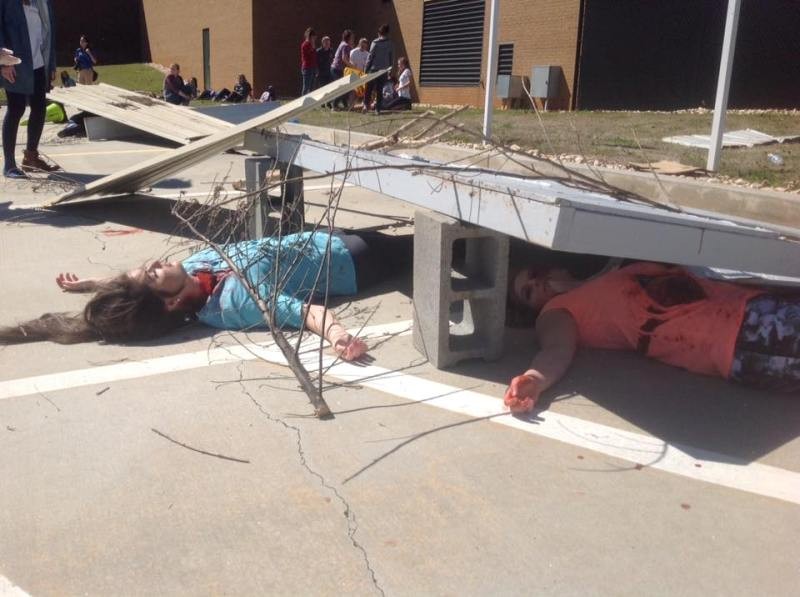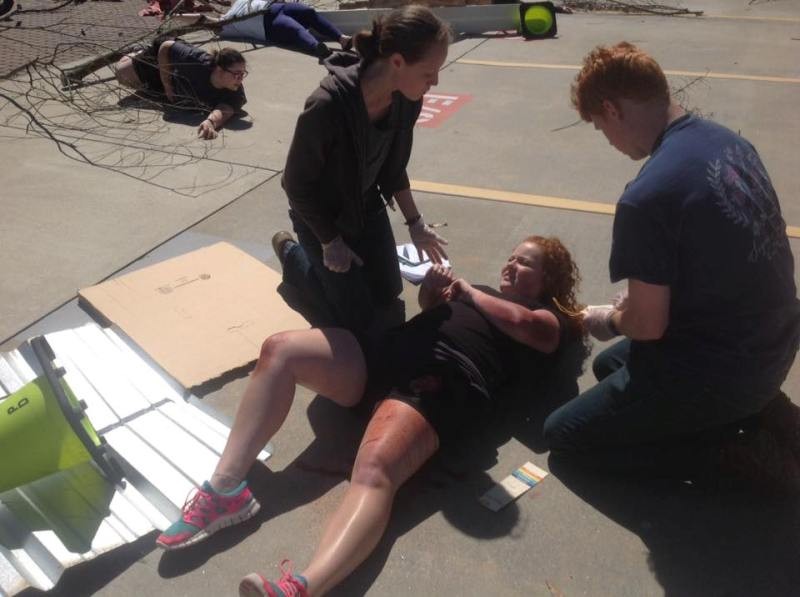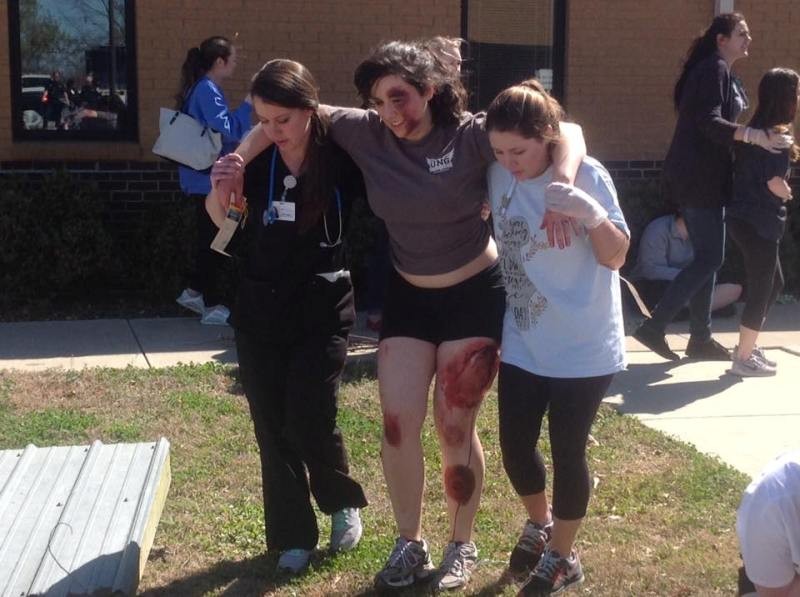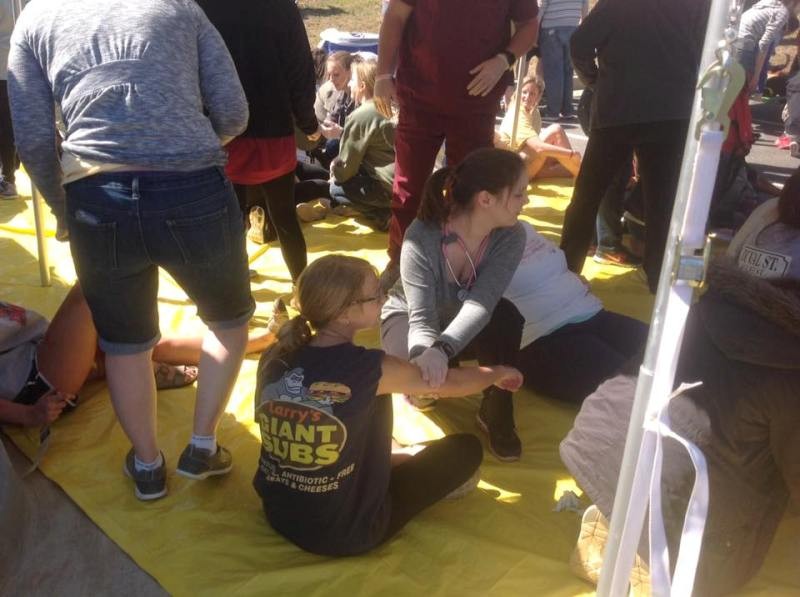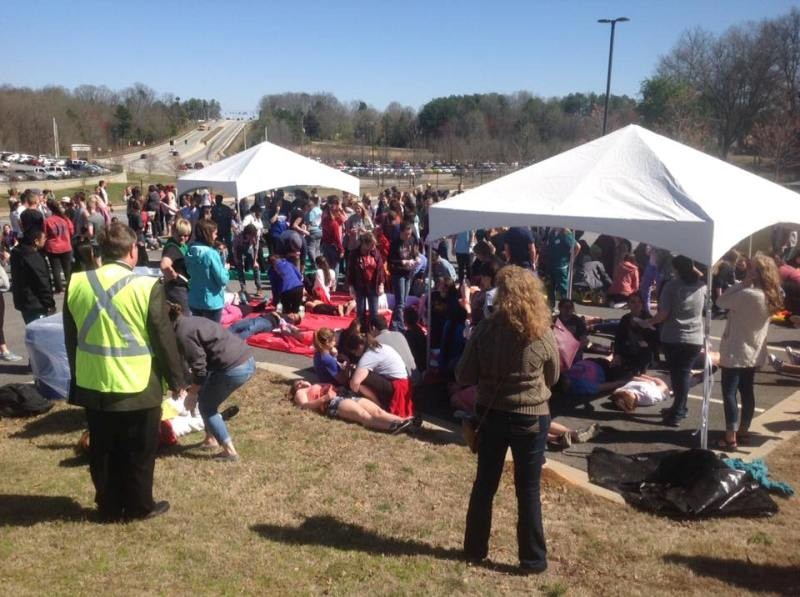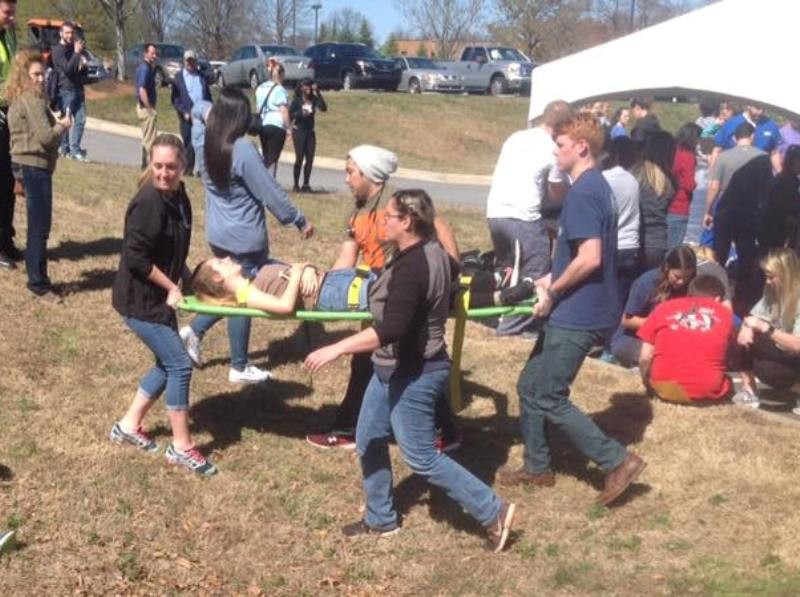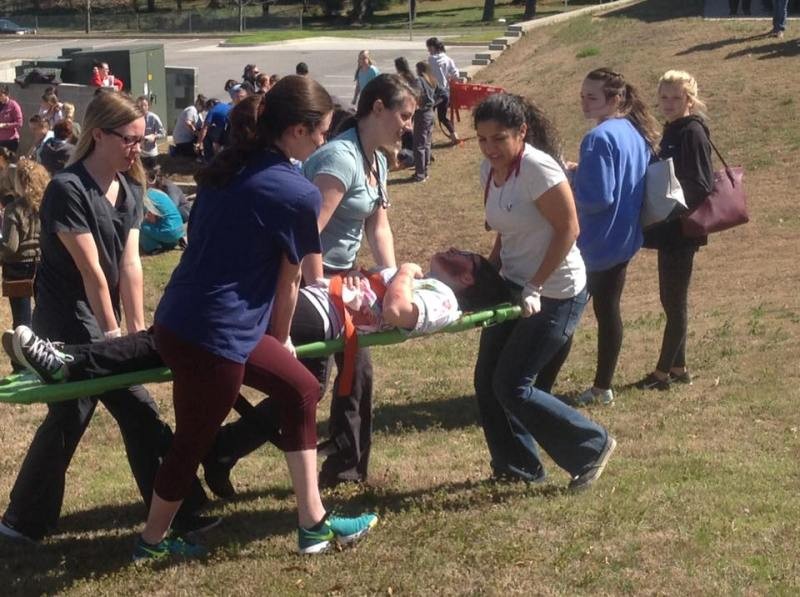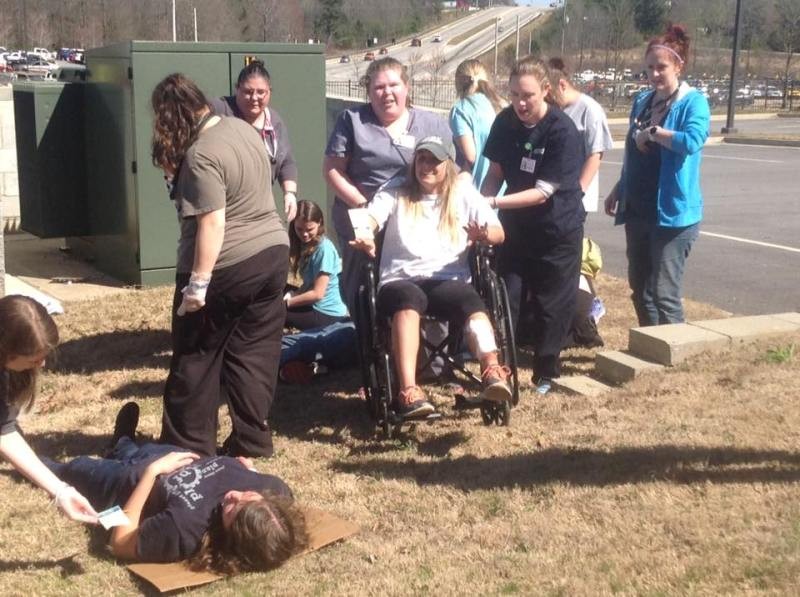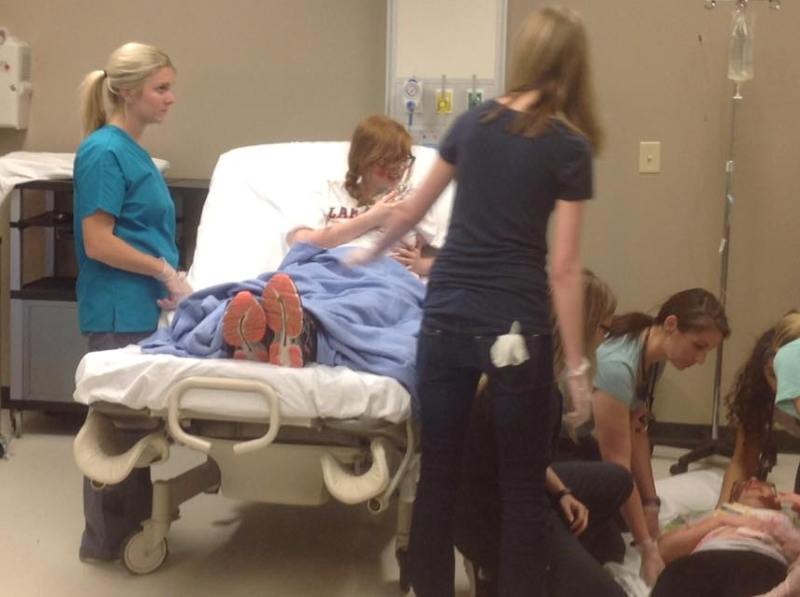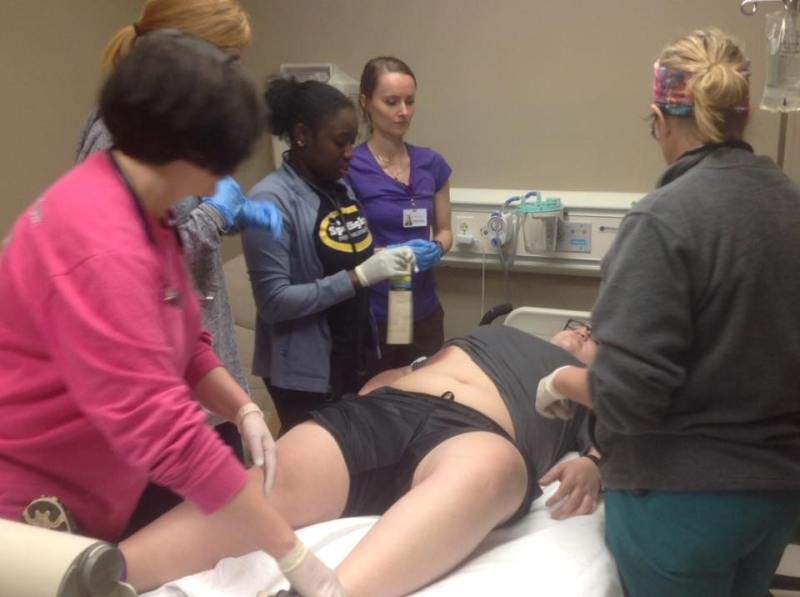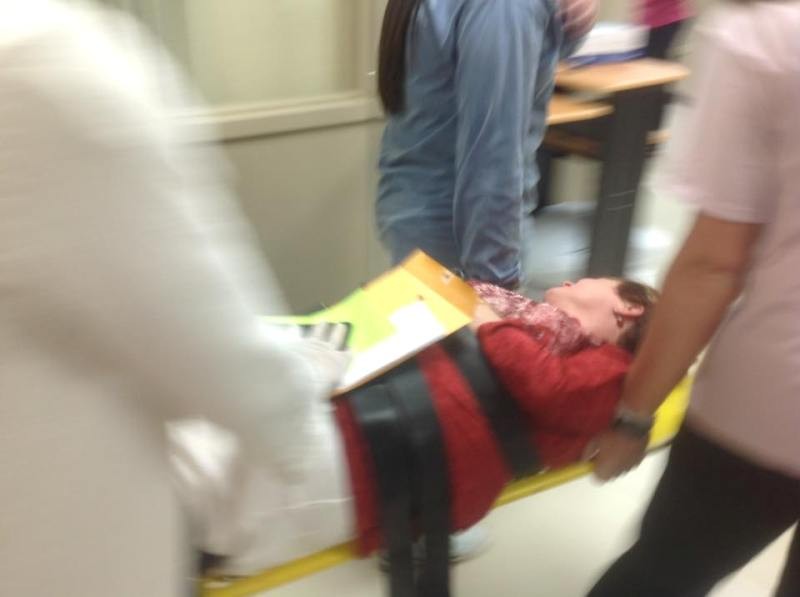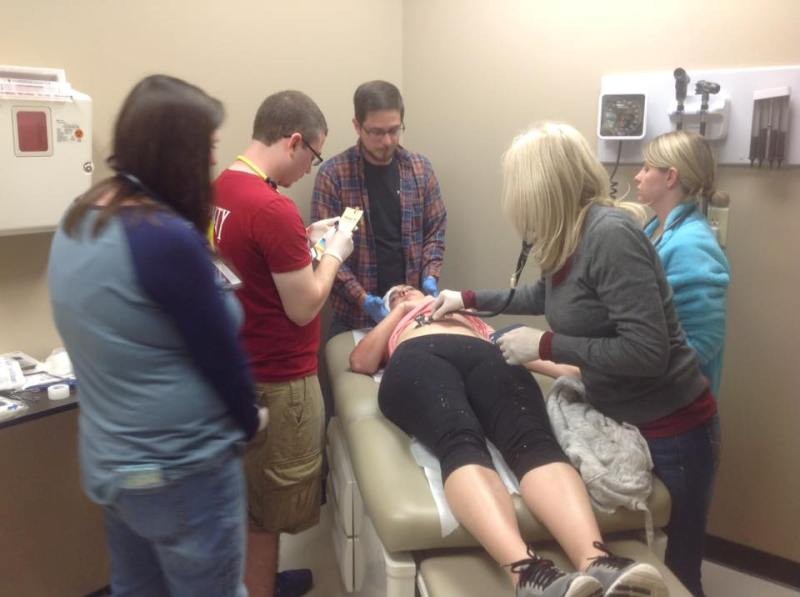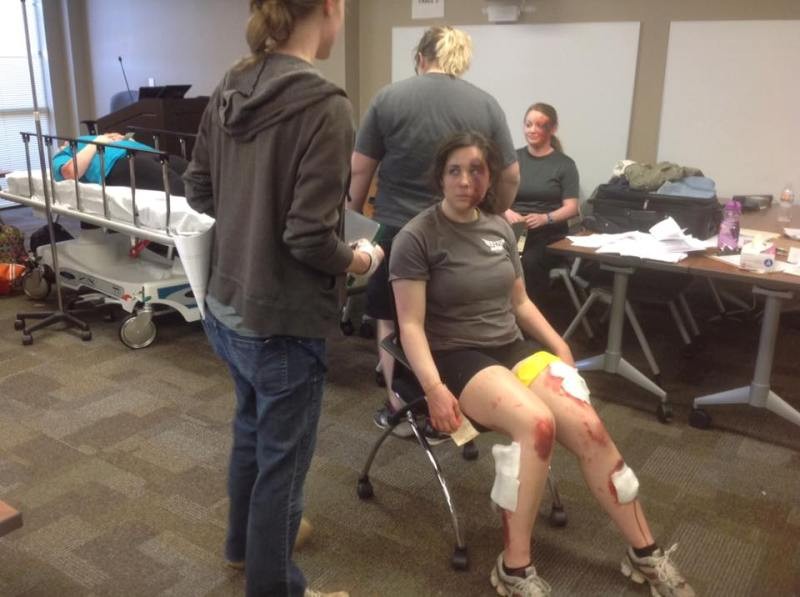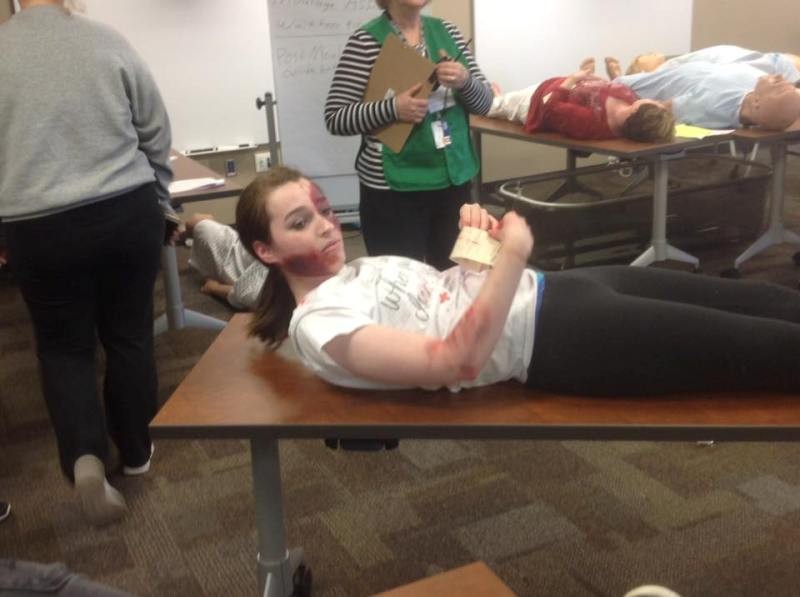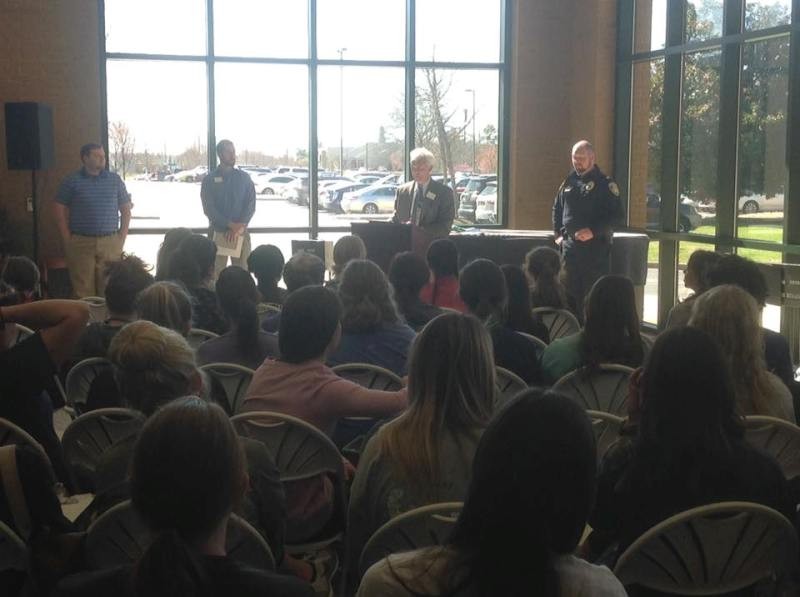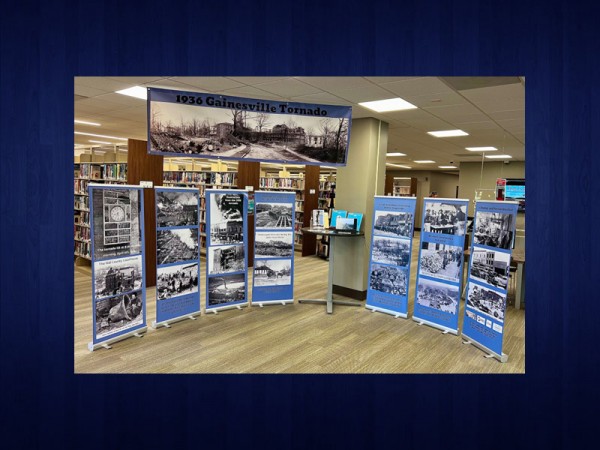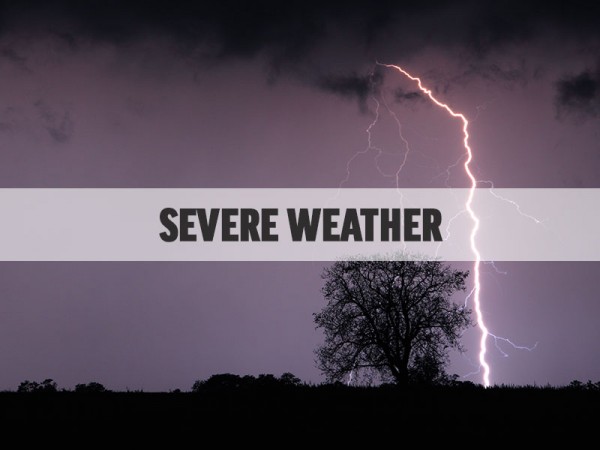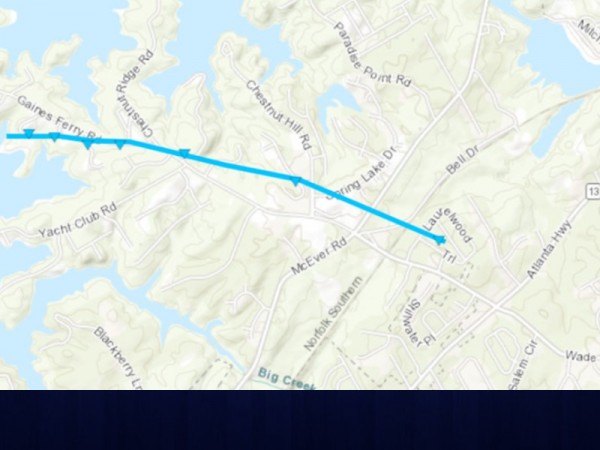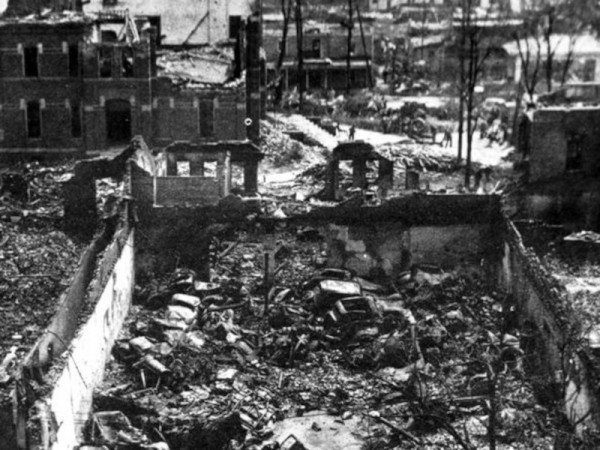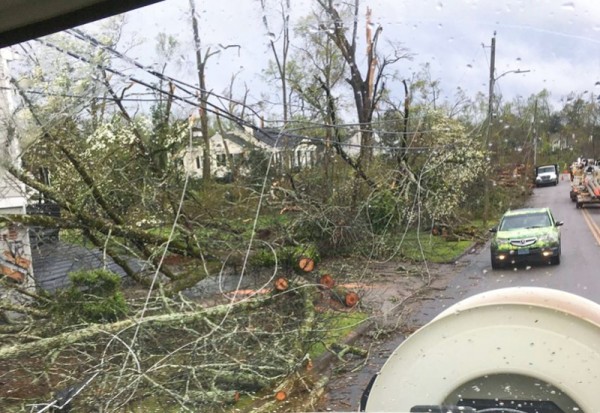A tornado hit the University of North Georgia's Gainesville campus Wednesday afternoon leaving almost three-hundred injured students in its wake, or at least that was the scenario presented to students in the UNG College of Health Sciences and Professions.
“There are very few health programs across the county that offer disaster training and exercise simulation for their students,” said Carolynn DeSandre, assistant dean of UNG's College of Health Sciences & Professions and director of the exercise. “But these are real world events.”
A disaster scene featuring hundreds of students strewn across the parking lot, covered with debris and moulage (special effects makeup) that would rival a small-budget studio film, was set up behind the Continuing Education Building allowing physical therapy, clinical mental health counseling and nursing students a chance to treat crush injuries resulting from a tornado in a realistic, fast-paced simulation.
Rescue teams were sent out to safely remove victims from the disaster area into a series of tents set off to the side. The victims were grouped based on the severity of their injuries, and the nurses would attempt to stabilize the patients until a transport team was available to carry them into a simulated emergency room inside the building. Once there, the patients would be treated for their injuries.
“I do want to go (work) in the ER,” said Savannah Holubitsky, a senior UNG nursing student who wants to work at Northeast Georgia Medical Center upon graduation. “So that was exciting.”
Over 600 students, faculty and staff participated in this year’s mock disaster event which, according to DeSandre, was three times as large as last year’s simulated active shooter scenario on the Dahlonega campus.
The goal is to have a mock disaster event at one of UNG’s campuses each year. Next year will be the third year for UNG to host such an event and though it is still officially undecided, DeSandre hinted that they might have students quarantine an exposure of some sort.
“(Mock disasters) really give our students an opportunity to get those skills that they wouldn’t necessarily get in a traditional education program,” DeSandre said.


